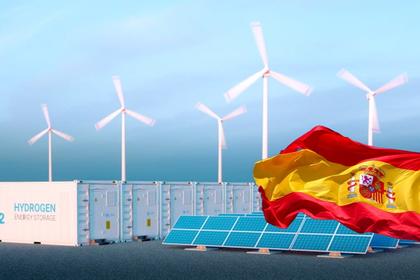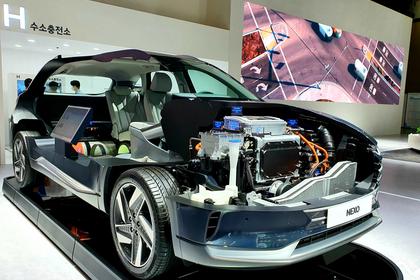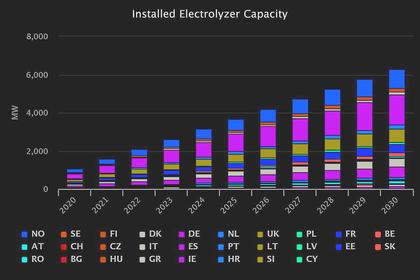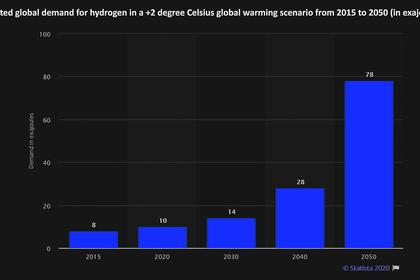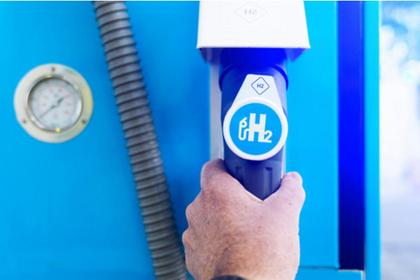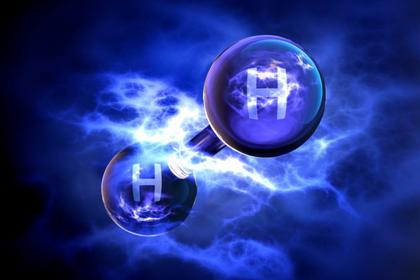
AMMONIA FOR HYDROGEN ENERGY
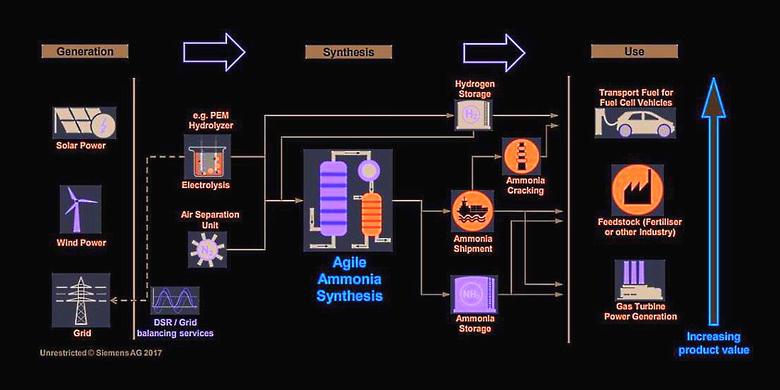
SD - November 18, 2020 - Northwestern University researchers have developed a highly effective, environmentally friendly method for converting ammonia into hydrogen. Outlined in a recent publication in the journal Joule, the new technique is a major step forward for enabling a zero-pollution, hydrogen-fueled economy.
The idea of using ammonia as a carrier for hydrogen delivery has gained traction in recent years because ammonia is much easier to liquify than hydrogen and is therefore much easier to store and transport. Northwestern's technological breakthrough overcomes several existing barriers to the production of clean hydrogen from ammonia.
"The bane for hydrogen fuel cells has been the lack of delivery infrastructure," said Sossina Haile, lead author of the study. "It's difficult and expensive to transport hydrogen, but an extensive ammonia delivery system already exists. There are pipelines for it. We deliver lots of ammonia all over the world for fertilizer. If you give us ammonia, the electrochemical systems we developed can convert that ammonia to fuel-cell-ready, clean hydrogen on-site at any scale."
Haile is Walter P. Murphy Professor of materials science and engineering at Northwestern's McCormick School of Engineering with additional appointments in applied physics and chemistry. She also is co-director at the University-wide Institute for Sustainability and Energy at Northwestern.
In the study, Haile and her research team report they are able to conduct the ammonia-to-hydrogen conversion using renewable electricity instead of fossil-fueled thermal energy because the process functions at much lower temperatures than traditional methods (250 degrees Celsius as opposed to 500 to 600 degrees Celsius). Second, the new technique generates pure hydrogen that does not need to be separated from any unreacted ammonia or other products. Third, the process is efficient because all of the electrical current supplied to the device directly produces hydrogen, without any loss to parasitic reactions. As an added advantage, because the hydrogen produced is pure, it can be directly pressurized for high-density storage by simply ramping up the electrical power.
To accomplish the conversion, the researchers built a unique electrochemical cell with a proton-conducting membrane and integrated it with an ammonia-splitting catalyst.
"The ammonia first encounters the catalyst that splits it into nitrogen and hydrogen," Haile said. "That hydrogen gets immediately converted into protons, which are then electrically driven across the proton-conducting membrane in our electrochemical cell. By continually pulling off the hydrogen, we drive the reaction to go further than it would otherwise. This is known as Le Chatelier's principle. By removing one of the products of the ammonia-splitting reaction -- namely the hydrogen -- we push the reaction forward, beyond what the ammonia-splitting catalyst can do alone."
The hydrogen generated from the ammonia splitting then can be used in a fuel cell. Like batteries, fuel cells produce electric power by converting energy produced by chemical reactions. Unlike batteries, fuel cells can produce electricity as long as fuel is supplied, never losing their charge. Hydrogen is a clean fuel that, when consumed in a fuel cell, produces water as its only byproduct. This stands in contrast with fossil fuels, which produce climate-changing greenhouse gases such as carbon dioxide, methane and nitrous oxide.
Haile predicts that the new technology could be especially transformative in the transportation sector. In 2018, the movement of people and goods by cars, trucks, trains, ships, airplanes and other vehicles accounted for 28% of greenhouse gas emissions in the U.S. -- more than any other economic sector according to the Environmental Protection Agency.
"Battery-powered vehicles are great, but there's certainly a question of range and material supply," Haile said. "Converting ammonia to hydrogen on-site and in a distributed way would allow you to drive into a fueling station and get pressurized hydrogen for your car. There's also a growing interest for hydrogen fuel cells for the aviation industry because batteries are so heavy."
Haile and her team have made major advances in the area of fuel cells over the years. As a next step in their work, they are exploring new methods to produce ammonia in an environmentally friendly way.
-----
Earlier:
